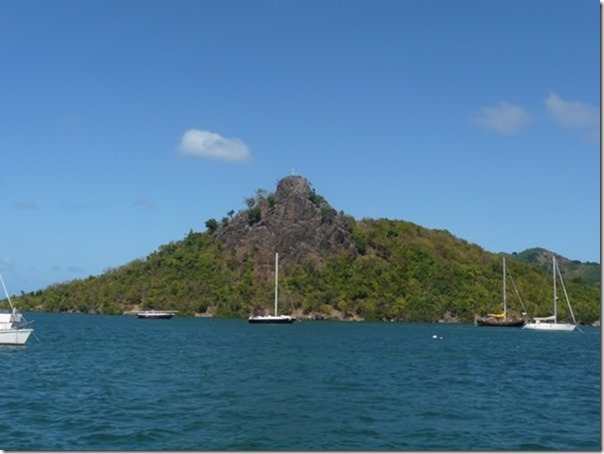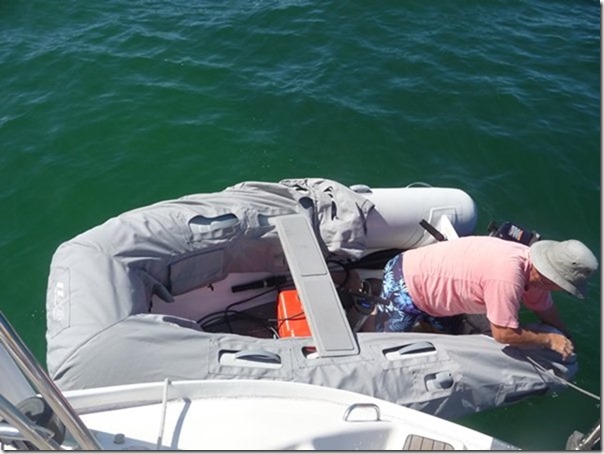Into Simpson Lagoon

Ile Jeudi
Bob and Lin Griffiths
Fri 13 Feb 2015 21:12
|
Monday 9 to Friday 13 February 2015
We woke up to find that the fridge had been defrosting overnight. Not
funny and something to add to the list once inside the lagoon.
We were boarded by 3 Dutch Coastguard Officers who asked to inspect our
papers and check our safety gear. No doubt they saw our yellow flag and
realised we were new arrivals. They couldn’t have been more polite but
gave us a gentle telling off for having some fire extinguishers which had
exceeded their checking and recharge dates. They said that as the engine
room extinguisher was in date they wouldn’t have to fine us (how they knew this
we don’t know because they didn’t go into the engine room to inspect it!).
Most of our flares were in date although all were due to expire this year, some
next month. They had no interest in the liferaft which had just been
serviced in Antigua!
After they left I went ashore and paid the dues to pass under the road
bridge on the Dutch side. This is raised several times a day to let tall
vessels into the lagoon and we made it in time for the 11.30am opening.
There is now also a causeway road which crosses the middle of the lagoon which
swings open 15 minutes later to allow incoming boats to pass over to the French
side if they wish. We did wish and anchored soon after off a small
headland known as ‘The Witch’s Tit’.
Here is a picture of the offending headland:-
 We are now on the other side of and closer to the airport although not as
close as it appears in this picture:-
 The next few days were spent finding out where everything is and who does
what by way of boat repairs. In the meantime I had a poke around with a
multi meter and found there was a drop of one volt somewhere between the battery
and the fridge compressor. This means that every time the fridge fires up
it’s low voltage protection circuit would shut it down again (to protect the
batteries from being discharged too much by the fridge). When we ran the
engine and increased the voltage the fridge worked fine so it seems the problem
is electrical rather than a loss of gas in the system.
The Raymarine dealer referred us to Atlantis Marine to resolve our
hydraulic autopilot ram problem who it turns out don’t do hydraulics and further
referred us to FKG. We booked a visit from them and then contacted Custom
Fit Marine to look at our fridge wiring.
I collected a dinghy cover from Budget Marine which we had ordered back in
December and who had been holding it for us. The strong UV out here plays
havoc with the inflatable tubes on the dinghies and the quote for having one
made in Antigua was twice the price of buying one from the dinghy manufacturer
(the opposite is usually the case).
Starting to fit the cover. The dinghy is partially deflated so the
seat can be removed:-
 Nearly there:-
 Oh hello, what are you doing there? I had no idea Lin was snapping
away. The cover has to stretch for a few days before sticking some ties to
the inside of the boat:-
 The dinghy is a RIB, or Rigid Inflatable Boat. The hull is made of
aluminium (in our case) or, more often, glassfibre and then surrounded by
inflatable tubes. This produces a relatively light and stable boat.
These were designed by the RNLI in the UK for inshore rescue boats and the
larger ones are capable of very high speeds. Sadly the RNLI didn’t patent
the design which has become the standard for dinghies around the world.
Previously they either had soft rubber floors or were ‘hard all over’ which were
heavy, slow and less stable.
|